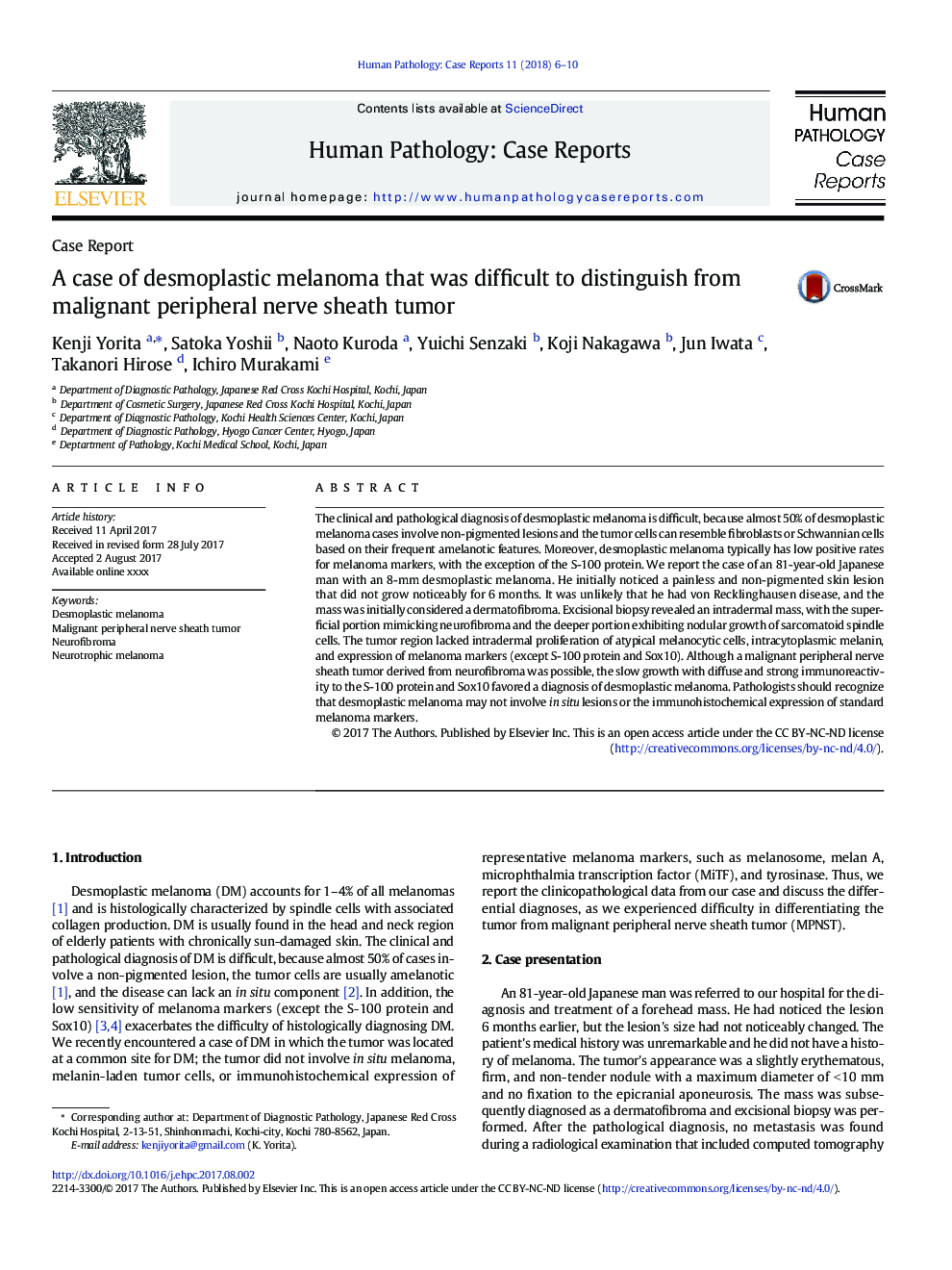| Article ID | Journal | Published Year | Pages | File Type |
|---|---|---|---|---|
| 5716421 | Human Pathology: Case Reports | 2018 | 5 Pages |
The clinical and pathological diagnosis of desmoplastic melanoma is difficult, because almost 50% of desmoplastic melanoma cases involve non-pigmented lesions and the tumor cells can resemble fibroblasts or Schwannian cells based on their frequent amelanotic features. Moreover, desmoplastic melanoma typically has low positive rates for melanoma markers, with the exception of the S-100 protein. We report the case of an 81-year-old Japanese man with an 8-mm desmoplastic melanoma. He initially noticed a painless and non-pigmented skin lesion that did not grow noticeably for 6Â months. It was unlikely that he had von Recklinghausen disease, and the mass was initially considered a dermatofibroma. Excisional biopsy revealed an intradermal mass, with the superficial portion mimicking neurofibroma and the deeper portion exhibiting nodular growth of sarcomatoid spindle cells. The tumor region lacked intradermal proliferation of atypical melanocytic cells, intracytoplasmic melanin, and expression of melanoma markers (except S-100 protein and Sox10). Although a malignant peripheral nerve sheath tumor derived from neurofibroma was possible, the slow growth with diffuse and strong immunoreactivity to the S-100 protein and Sox10 favored a diagnosis of desmoplastic melanoma. Pathologists should recognize that desmoplastic melanoma may not involve in situ lesions or the immunohistochemical expression of standard melanoma markers.
